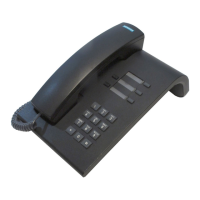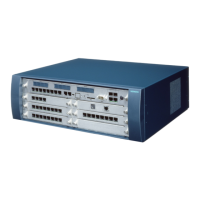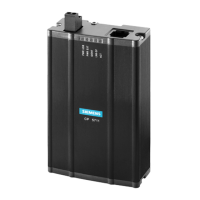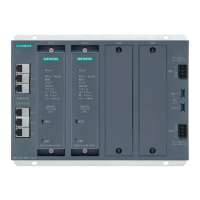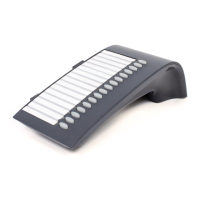5. F2 Change to Secondary cycle Grp 2: 3
6.
#1
Select 1st UCD group Grp 1: 3
7.
*5
Change default value Grp 1: 5
8.
*6
Change default value of 2nd UCD group Grp 2: 6
9. F7 Return to Group Options submenu 313 Group Options
Group Options - AICC connection (31 2 4)
This option defines whether or not "AICC connection" is permitted for each UCD group.
If "AICC connection" is set, the system automatically detects whether a headset is connected to
the optiset E and then operates accordingly.
The "Release" function should be programmed to a key if a headset is connected to an
optiset.
Programming with Hicom Assistant T
Step Entry Action Display
1. 31-2-4 AICC connection Grp 1: 0
2.
*1
Change the AICC connection of the 1st UCD group to yes Grp 1: 1
3. F7 Return to Group Options submenu 313 Group Options
Group Options - max. waiting calls (31 2 5)
If a UCD group is busy, this option allows you to determine the number of incoming calls that
can be kept waiting.
If the maximum number is reached, the overflow is handled by Call Management.
Programming with Hicom Assistant T
Step Entry Action Display
1. 31-2-5 Max. waiting calls Grp 1: 30
2.
*2
Reduce the number of waiting calls to 2 (1st UCD group) Grp 1: 2
3.
*3
Reduce the number of waiting calls to 3 (2nd UCD group) Grp 2: 3
4. F7 F7 Return to: UCD UCD
Wrap-up period (31 3)
Hicom 150 E Office Rel.1.0 Service Manual - 8.31 UCD - Universal Call Distribution
http://cmweb01.mch.pn.siemens.de/e_doku/en/h150/h15/30/sh/2/15_831.htm (5 of 7) [06/04/2000 13:14:19]

